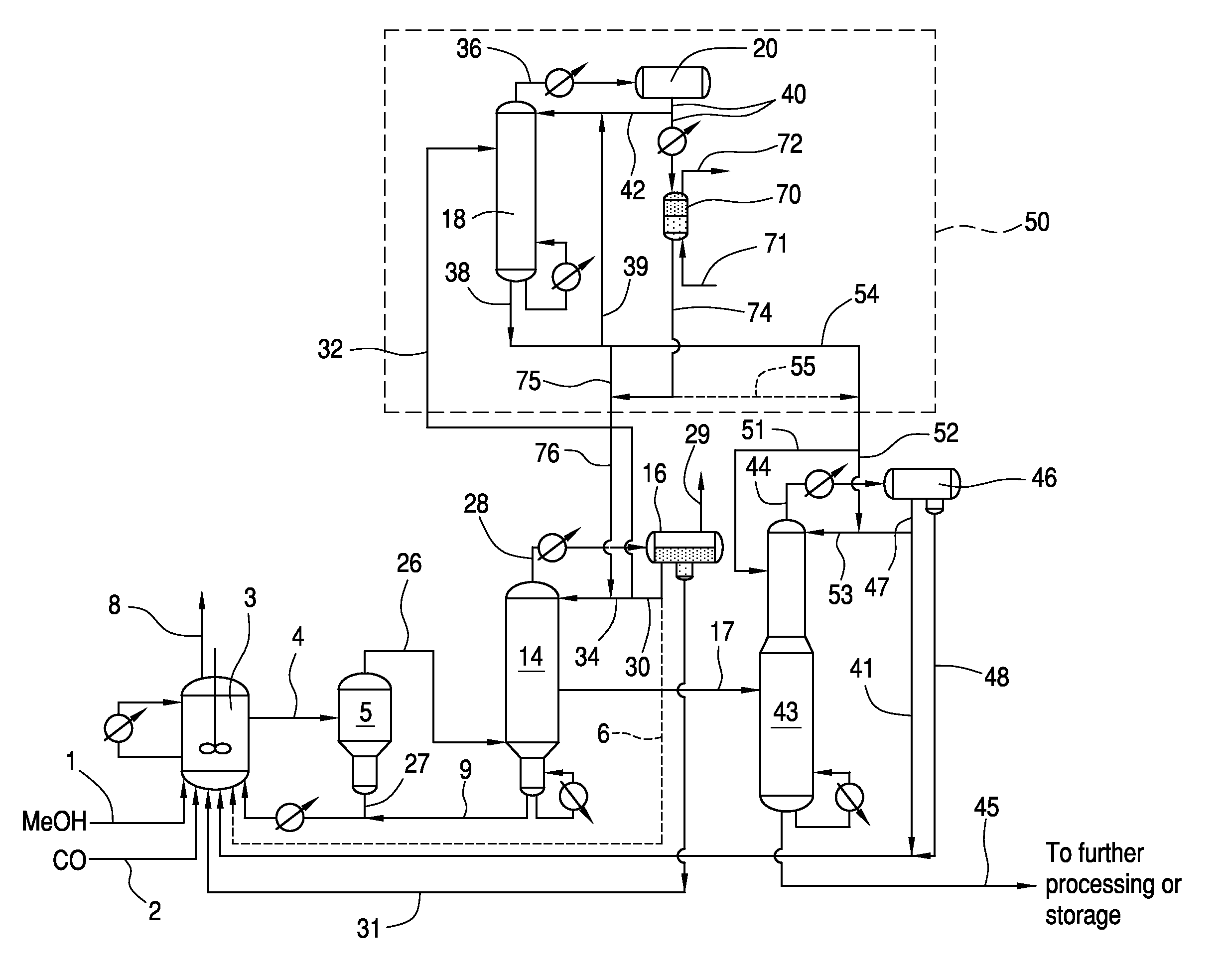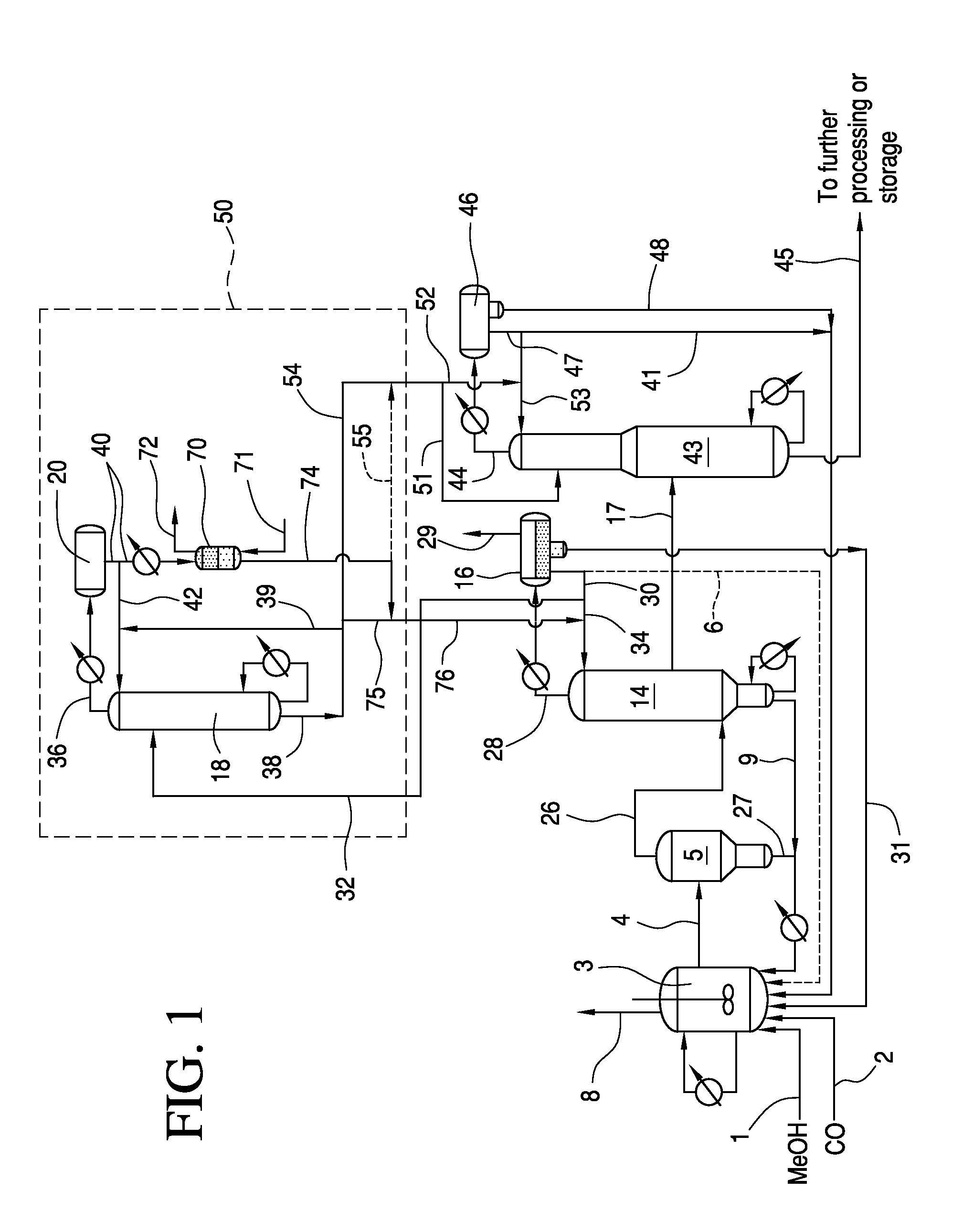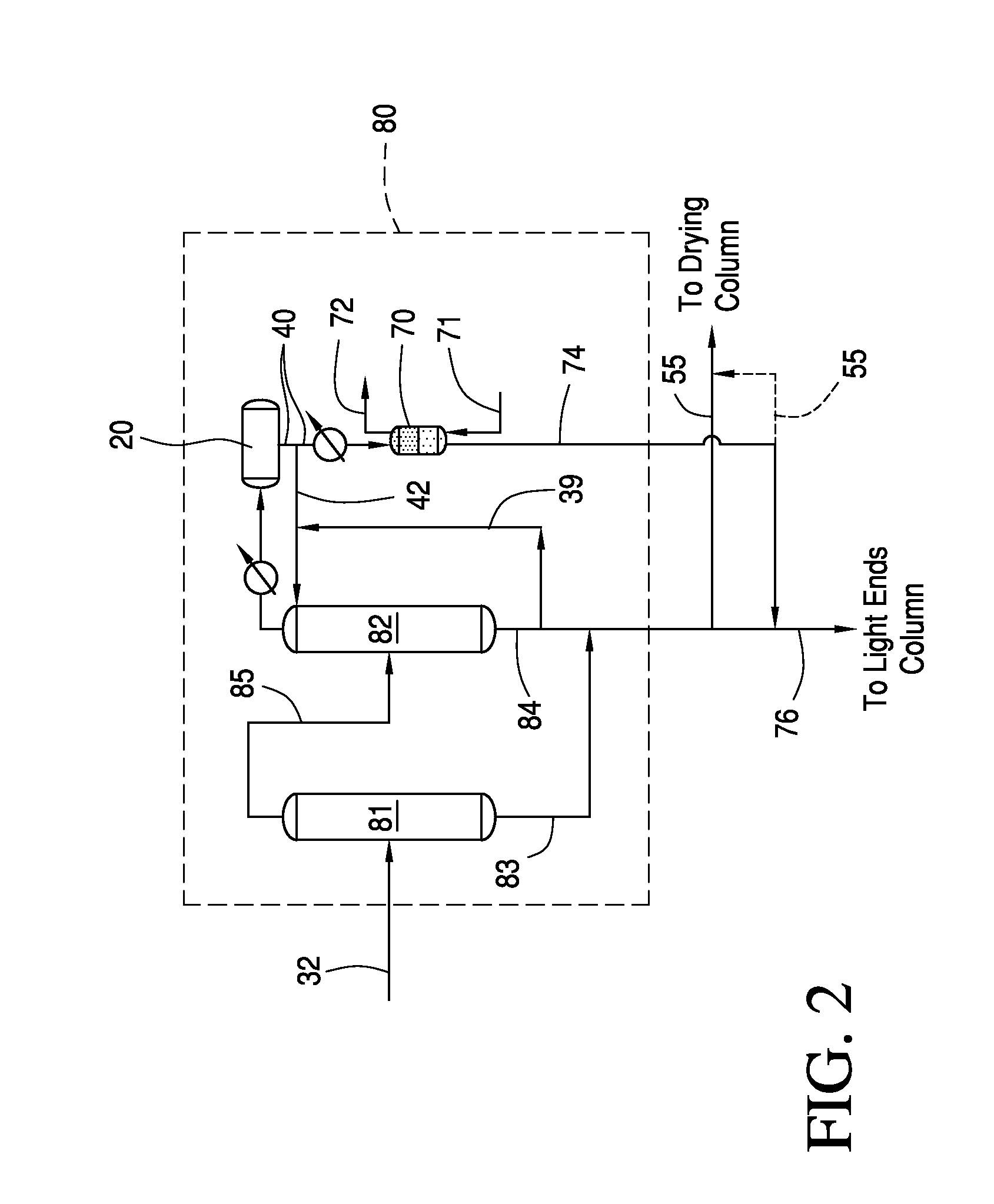Processes for Producing Acetic Acid
a technology of acetic acid and process, which is applied in the direction of carboxylic compound preparation, solvent extraction, separation process, etc., can solve the problems of increasing process cost, increasing production capacity, and building up of impurities over time, so as to reduce the load on the reactor and separation system, the effect of reducing the amount of acetic acid recycled and increasing production capacity
- Summary
- Abstract
- Description
- Claims
- Application Information
AI Technical Summary
Benefits of technology
Problems solved by technology
Method used
Image
Examples
example
[0081]The benefits of reduced acid recycle to the reactor according to one non-limiting embodiment of the present invention will be better understood in view of the following mass balance example.
[0082]When operating at low water composition, the methanol carbonylation unit does not consume or produce water. The reactor water composition is controlled by manipulating the flow rate of the recycle streams from the purification section back to the reactor. Therefore, at steady state, the total water contained in the recycle streams will be determined by the desired set point for reactor water composition. Using ASPEN Plus 7.1 simulation software, a comparison between a conventional process and an improved process according to the embodiment of the invention shown in FIG. 1 was determined by mass balance calculations such that the total amount of water contained in the recycle streams was the same in both cases. In this mass balance example, as shown in FIG. 1, one aliquot portion of th...
PUM
| Property | Measurement | Unit |
|---|---|---|
| Fraction | aaaaa | aaaaa |
| Fraction | aaaaa | aaaaa |
| Fraction | aaaaa | aaaaa |
Abstract
Description
Claims
Application Information
 Login to View More
Login to View More - R&D
- Intellectual Property
- Life Sciences
- Materials
- Tech Scout
- Unparalleled Data Quality
- Higher Quality Content
- 60% Fewer Hallucinations
Browse by: Latest US Patents, China's latest patents, Technical Efficacy Thesaurus, Application Domain, Technology Topic, Popular Technical Reports.
© 2025 PatSnap. All rights reserved.Legal|Privacy policy|Modern Slavery Act Transparency Statement|Sitemap|About US| Contact US: help@patsnap.com



